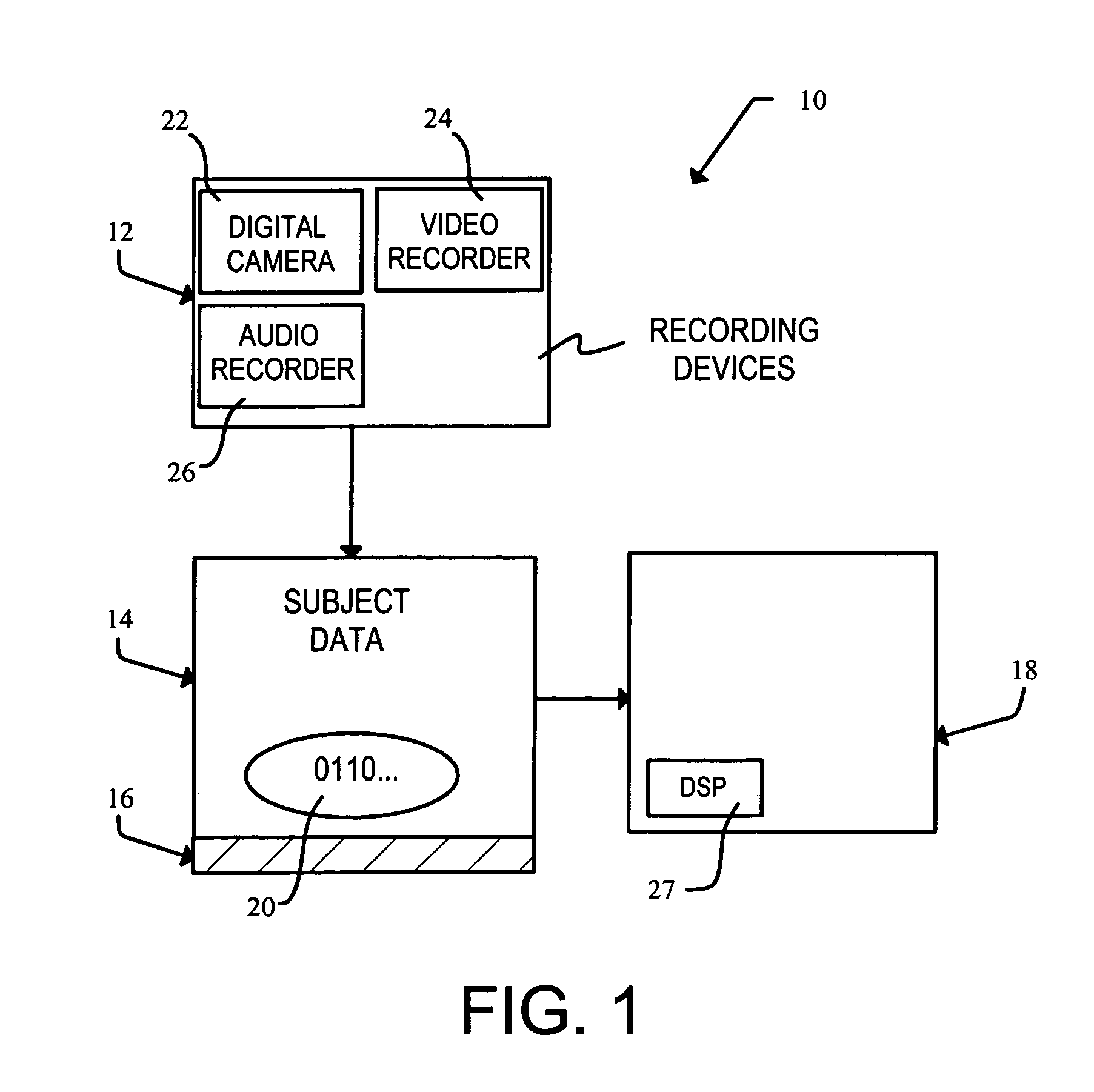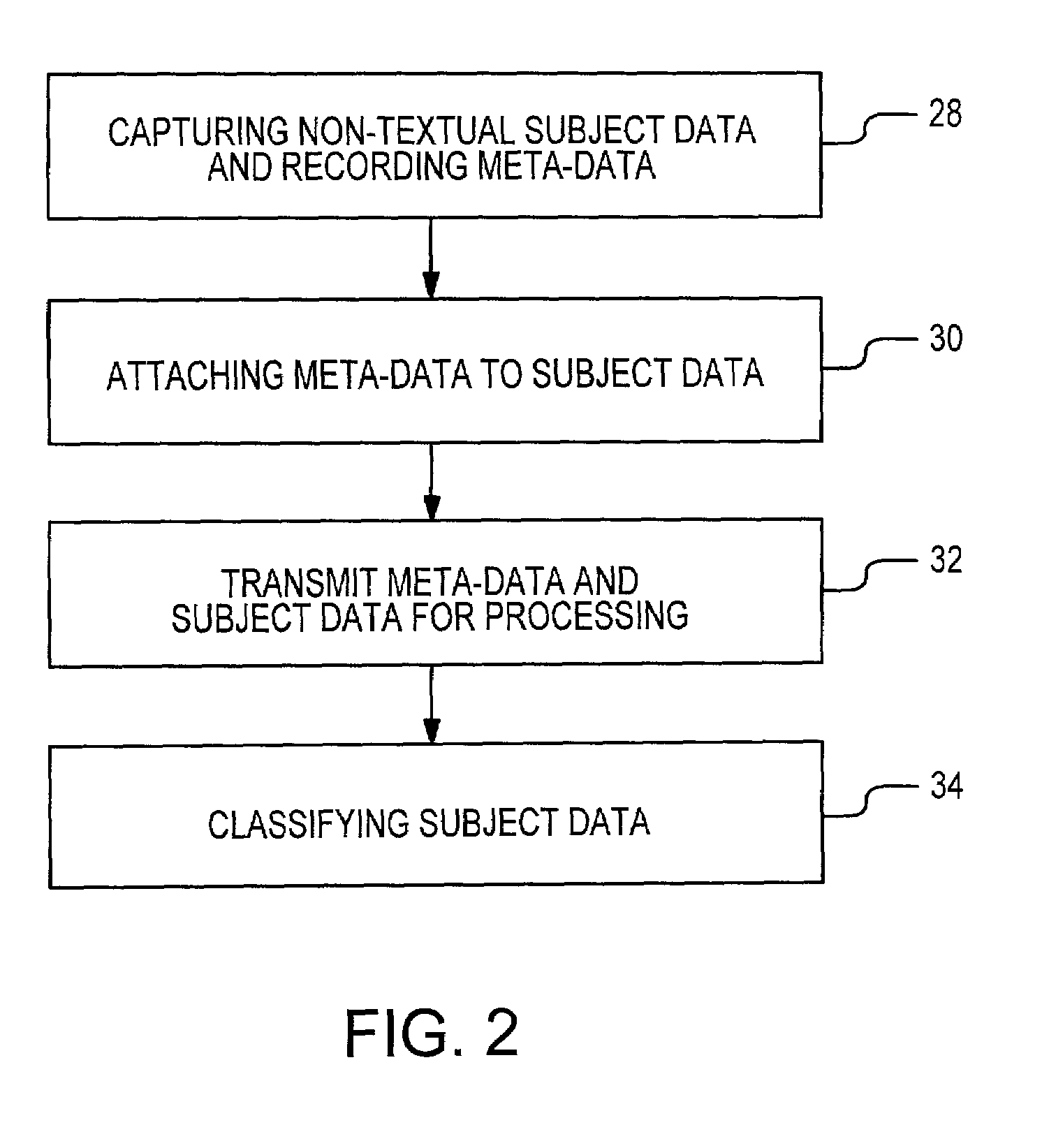Camera meta-data for content categorization
- Summary
- Abstract
- Description
- Claims
- Application Information
AI Technical Summary
Benefits of technology
Problems solved by technology
Method used
Image
Examples
Embodiment Construction
[0016]With reference to FIG. 1, a classification system 10 includes at least one recording device 12 for capturing both a file of non-textual subject data 14 and a tagline of associated meta-data 16. The non-textual subject data and the meta-data are transferred to a processing system 18 for identifying and designating classifiers (i.e., semantic descriptions) associated with the non-textual subject data. The non-textual subject data may be a digitized image file 20 that is captured by a digital camera 22. Alternatively, the subject data are video files captured by a video recorder 24 or audio files captured by an audio recorder 26.
[0017]The files are segmented into blocks of data for analysis using means (algorithms) known in the art. Along with each file of non-textual subject data 14, meta-data that is specific to the operational conditions of the recording device 12 during the capture of the non-textual subject data is recorded. In the embodiment in which the recording device is...
PUM
 Login to View More
Login to View More Abstract
Description
Claims
Application Information
 Login to View More
Login to View More - R&D
- Intellectual Property
- Life Sciences
- Materials
- Tech Scout
- Unparalleled Data Quality
- Higher Quality Content
- 60% Fewer Hallucinations
Browse by: Latest US Patents, China's latest patents, Technical Efficacy Thesaurus, Application Domain, Technology Topic, Popular Technical Reports.
© 2025 PatSnap. All rights reserved.Legal|Privacy policy|Modern Slavery Act Transparency Statement|Sitemap|About US| Contact US: help@patsnap.com



